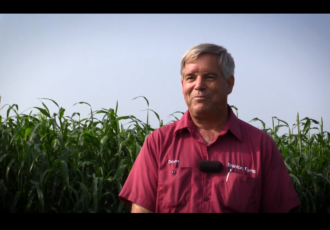Improving soil health without understanding the soil's condition is not easy and traditional soil tests, though important management tools, don't provide information on the physical structure or microbial life living in the soil. That is why a multidisciplinary team at Cornell University created a soil health assessment, which measures physical, chemical and biological indicators as well as pH and nutrient levels in the soil. The soil health assessment received early funding from multiple SARE grants as well as other sources.
The need for the assessment was born out of a survey of Northeastern farmers, many of whom used traditional soil tests but “felt there was something more going on with their soils,” says Bianca Moebius-Clune, director of the soil health division at USDA’s Natural Resources Conservation Service. “There were erosion issues, they had weed issues, they had decreasing yields even though they needed to irrigate more, put on more fertilizer, more pesticides. And they really didn’t have good diagnostic tools for all of these issues.”
The Cornell lab currently receives about 2,000 samples per year, and interest in the assessment continues to grow in the Northeast and across the country.
